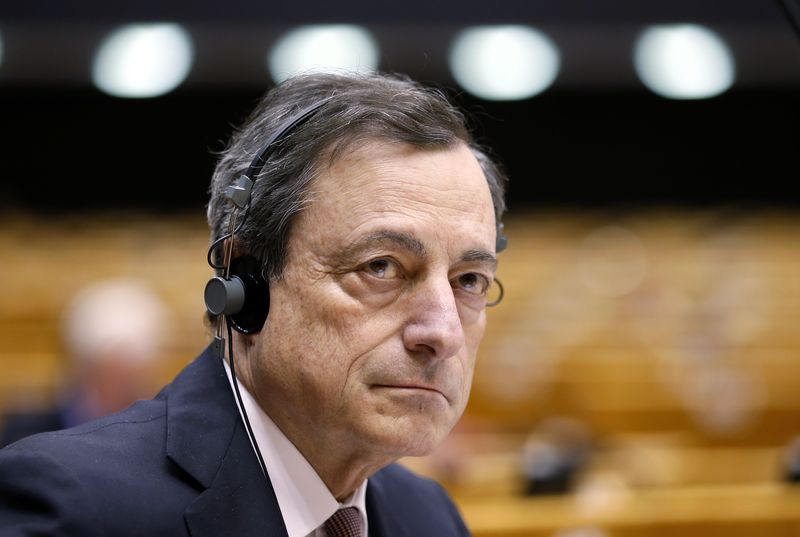Investing.com - As markets wait for the European Central Bank (ECB) to make a move at their next policy meeting on March 10, the question for market participants isn’t if, but how much.
After the euro zone registered deflation in February, pressure has increased for the ECB to embark on additional easing measures and experts widely expect the central bank run by Mario Draghi to step up to the plate and deliver.
Almost all forecasters predicted that the ECB will cut the deposit rate by at least 10 basis points (bp) pushing it further into negative territory at -0.4%. The already negative means that banks must pay the ECB for monies they deposit there.
Some experts believed that the central bank will further introduce a tiered deposit rate system to help protect banks’ profits from becoming squeezed and thus cut down on lending.
In another possible ECB easing measure, the odds increased that the central bank would also expand its asset purchase program, known as quantitative easing (QE) from the current €60 billion monthly.
According to a Reuters poll published on Monday, 68% of 21 euro money market traders said they believe the purchases will increase, compared to the prior poll which had registered just 50% the week before.
A separate Bloomberg survey of 252 economists whose results were also published Monday showed that nearly three-quarters of the polled expect an increase. The median estimate of those surveyed was an increase by €15 billion to €75 billion per month.
Though the current asset purchase program is set to expire in March 2017, one third of those polled thought that the ECB will announce an extension.
Among the individual brokers, the options with the highest cut to the deposit rate being 20bp and the largest asset purchase increase being €30 billion to a total of €90 billion monthly.
The following is a list of individual broker forecasts in alphabetical order:
Bank of America-Merrill Lynch: 10bp reduction in deposit rate with a €10 billion increase in monthly asset purchases. They also expect an extension in the purchase program by 6 months.
Barclays: 10bp cut in deposit rate with the door left open for another 10bp reduction in June. The British bank didn’t give a specific number for the asset purchases but spoke of “fine-tuning” aspects.
BNP: 20bp reduction in deposit rate with a “substantial” increase in asset purchases.
Citi: 10bp cut in deposit rate with a €15 billion increase in QE.
Commerzbank: 20bp decrease to deposit rate with a €20 billion increase in QE. They also expect the program to be extended by 6 months and thought that the introduction of a tiered rate was on the table.
Credit Suisse: 10bp cut in deposit rate with a €20 billion increase in asset purchases. The Swiss bank also expects an extension of the targeted long-term refinancing operations (TLTROs).
Goldman Sachs: 10bp cut in deposit rate and €10 billion increase in QE.
J.P. Morgan Chase Bank: 20bp cut in deposit rate with an additional 20bp reduction in June along with a €10 billion increase in QE. The U.S. bank also forecast a 3 month extension to the asset purchases along with two additional TLTROs during the second half of the year.
Lloyds: 10bp reduction in deposit rate and €10 billion increase in QE with a 3 month extension to March 2017 deadline.
Mizuho International: 10bp cut in deposit rate and €30 billion increase to QE.
Morgan Stanley: 20bp reduction in deposit rate and €20 billion addition to asset purchases. The broker also thought that a tiered rate was a possibility.
Nomura: 10bp cut in deposit rate and €10 billion increase in QE. They also forecast two new TLTROs.
Rabobank: 10bp reduction in deposit rate with another 10bp cut in June and an increase of €10-€20 billion in QE.
Societe Generale: 20bp cut in deposit rate and an extension of the asset purchase program.
UBS: 10bp reduction in deposit rate with a €10 billion increase in QE. The Swiss bank saw the possibility of a tiered-rate system.
